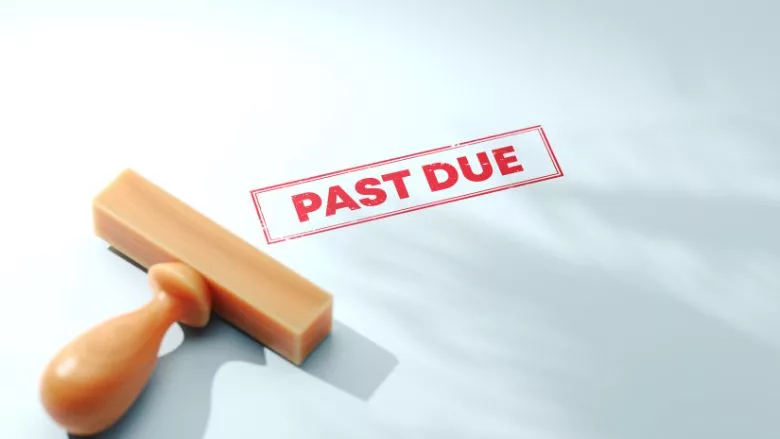Making Mortgage Companies Work With You (And Beating the Money Out of Them if They Don’t)
No matter your relationship with the homeowner, the adjuster or the insurance company, your relationship with the mortgage company is likely to be a competition of adverse interests

Photo: Ed Cross

Credit: shironosov / iStock / Getty Images Plus

Credit: atakan / iStock / Getty Images Plus
The scene is all too familiar. The homeowner is comfortable back in his or her home with all the repairs made. The adjuster was not entirely antagonistic and you even look forward to working with him again on a future job. The insurance company cut the check and sent it out without causing any delays. You worked hard. You take pride in your work and you know you did a great job. Surprising as it may sound, everyone is happy. So, why haven’t you been paid?
The answer is usually quite simple: A mortgage company is involved.
No matter your relationship with the homeowner, the adjuster or the insurance company, your relationship with the mortgage company is likely to be a competition of adverse interests, but try to keep it from becoming personally hostile. The conflict is relatively simple, yet can cause hours worth of problems and extra work. Mortgage lenders don’t like thinking that someone else will get paid while money is still owed to them and contractors certainly don’t like having to fight for the money they have rightly earned and require to make payroll.
Most likely, as with a majority of Americans, the homeowner you were working with still owes a balance on his or her mortgage. Almost all the time in mortgage agreements, mortgagor (borrower) and mortgagee (lender) agree to be co-insured on any future works of improvement. Every mortgage contains an assignment of insurance proceeds as additional security on the loan. The insurance company is required by the terms of the mortgage agreement to put the homeowner and the mortgage company on the check. Under the Uniform Commercial Code, the lienholder has a right to protect its collateral, in this case – the home. When the mortgage company, a financial institution, gets the check, it will deposit it and earn interest every day it sits in their custody and not in your pocket. This does not give them much incentive to speed the process along. The lender will set up road blocks at every turn.
Don’t take it personally. Homeowners have just as much difficulty getting insurance proceeds from their lender as you do. The bank wants to apply the money to the note. In fact, according to a post-disaster survey conducted by United Policyholders, a consumer advocacy group for insurance customers, around one-third of homeowners that responded said their lender wanted some or all of their insurance money to be used to reduce their mortgage balance before releasing funds for rebuilding.
WORK WITH ME
It’s not that the mortgage company doesn’t like you or doesn’t think you have done a good job. Sometimes, loan documents even include provisions that purport to allow the lender at its sole discretion to receive and retain insurance proceeds, and use those to reduce debt, pay liens, or restore the property. An action like that would clearly make any restorer or contractor hit the roof. At the same time, there are many things you can do to move the process along and ensure things like that don’t happen. Lenders have voluminous internal policies and procedures and typically hire a fourth party entity to administer its loss draft process. This involves many layers of people and paper, so due diligence, good communication and documentation are the keys to success. The forms, protocols and inspections all add up to considerable delay. In a play off of The First Wive’s Club motto: Don’t get mad, get paid.
For many claims less than $15,000, if the loan is current, the funds will be released to the owner with no problems. On larger claims, the mortgage company tends to get more involved and things get trickier. If the project is large enough to require stage payments or draws, the mortgage company may require inspections before releasing the funds. If this is the case, the contractor should request the name and phone number of the inspector assigned to the project, make initial contact and schedule inspections for the entire project according to the project schedule. Be proactive and stay on top of things. Make sure to do this early on. Calling for last minute inspections only creates avoidable delays.
Try to play nice (at least at first). There is no need to start the process off on the wrong foot. If you know the claim is going to be over $5,000, let the owner know that the payment may need to be negotiated through the lender. Find out the name of the lender on Day One and get the owner’s signature on a Mortgage Authorization which directs the lender to communicate with you. A Limited Power of Attorney (if you can get one) may help speed the process along as well. You will need the name of the lender, the loan number and contact information for its Loss Draft Department. Immediately make a formal written demand for a complete and unabridged list of all documents you must provide and procedures you must follow to get the funds released.
Record the names and direct numbers for everyone you speak to in order to establish a relationship. Diary each communication to create a paper trail. Keep the owner in the loop too. Your wonderful customer service and professionalism will make them want to do what they can to help expedite the process.
Send all documents to the lender via certified mail, with signature required. Keep your paper trail strong. Also, keep your resolve strong. Your work is not done after this step is completed. Stay vigilant. Make follow up calls and send e-mails. If you break Ed’s cardinal rule against using documents entitled “Work Authorizations,” at least refer to them as a “Work Authorization Contracts” in communications with insurers and lenders. Hopefully your agreement has a proper assignment of insurance proceeds (not to be confused with a direction of pay). The insurance proceeds are pledged to you by way of the assignment, which in many instances turns out to be the most important part of a restoration contract.
Some restoration companies have one or more staff members working full-time on mortgage company follow-up. Dance the dance, fill out the forms and pester them for some reasonable period of time. Have a plan in place in advance for what to do if time goes by and you are not receiving any payment, and it appears they are not serious. Turn up the heat incrementally.
I’M WARNING YOU
The restorer has extra leverage before the work is complete. Changing contractors midstream is a nightmare for everyone with a stake in the property. Don’t rush to finish a job when a payment is seriously past due. With reasonable warning in advance, and reasonable steps taken to protect the property, you may simply stop work on the project. Use care to minimize damage to the relationship with the owner, who can be an important ally in dealing with the lender. Explain that you will need to stop work verbally before sending formal notice. Help the owner relate to the fact that you need to be paid for your efforts. If the owner has deposit accounts with the lender, perhaps a threat from the owner to remove all funds from that institution and place them in another would be helpful should things take a turn for the nasty.
If the payment is significantly past due, give the owner a couple of weeks’ notice - first verbally and then in writing - that you intend to record a mechanics lien. Watch the deadlines carefully. There is an art to timing the recordation of a mechanics lien. Mortgage holders have priority over subsequent lienholders, but no mortgage company wants to deal with selling a property that is subject to a lien. The lien may also strain the relationship with the owner, but you are entitled to protect your rights. There are times when you have to place your own interests above the customer’s. And if these efforts don’t trigger a payment…
LET THE BEATINGS BEGIN
Although the court rulings do not universally fall in favor of restorers, the law is most likely on your side. When it comes down to it, should your best efforts be for naught, don’t be afraid to bring the hammer down. There are a variety of established legal theories that apply to this situation, and new ones are currently under development.
LEGAL THEORIES
Unjust Enrichment
The theory of unjust enrichment will preclude mortgage companies from gaining the benefit of your hard work and the insurance proceeds at the same time.
The theory of unjust enrichment will preclude mortgage companies from gaining the benefit of your hard work and the insurance proceeds at the same time.
The landmark California case to look to in these situations is Kossian v. American National Insurance (1967) 254 Cal.App.2d 647. The main conclusion in Kossian was that a mortgage holder should not be compensated twice for the same loss. Kossian repaired the Bakersfield Inn after a large fire. The owner defaulted on his mortgage and the mortgagee filed a notice of default. The owner also declared bankruptcy. The insurance funds went to the lender. There was no contract between Kossian and the lender, so when the lender received the funds, it argued it had never agreed to pay for Kossian’s services. The trial court agreed and entered judgment against Kossian.
On appeal, the court recognized that the bank indeed had a legal right to the insurance proceeds under the insurance policy, but that the contractor had a competing right to them under the repair contract. The appellate court resolved the conflict in favor of the contractor on grounds that allowing the lender to retain the funds would be a grossly unfair windfall. The appellate court ruled that Kossian’s contract rights trumped the lender’s contract rights and reversed the judgment in favor of the defendant.
The appellate court’s rationale was that the lender had already reaped the benefits of the contractor’s expertise and hard work, which improved the lender’s collateral. Allowing the lender to receive the improvements and keep the cash would result in an unjust enrichment to the lender, as it would essentially amount to a double recovery. “The defendant should not be allowed to have the fruits of plaintiff’s labor and also the money value of that labor” (Kossian at 649). Moreover, the court reasoned that the lender’s claim to the funds no longer existed because the contractor had remedied the loss! “Good conscience dictates that under the circumstances the person benefited should make reimbursement” (Id).
Even if the mortgage holder has done nothing illegal, unjust enrichment will qualify a contractor for recovery in such a situation. It is one situation where the law favors what is fair and just.
A Michigan court declined to apply contract law to a case where a lawsuit was filed to determine whether a mechanics lien was junior to the lender’s lien. The court held that the lender would be unjustly enriched if it was able to keep the insurance proceeds as well as the work the contractor had done. In re Jackson Die Casting (2003) 291 BR 396 (E.D. Michigan).
Conversion
Conversion is the civil form of theft. It is the wrongful use and/or retention of the property of another. The bank may be liable for converting insurance proceeds that have been assigned to a restorer, even if its initial taking of the funds was lawful. The liability stems from the wrongful retention of the funds. Conversion is a particularly attractive claim because it allows for punitive damages and/or treble damages in addition to the ordinary compensatory damages recoverable under other civil claims.
Claim and Delivery
Claim and delivery is an action for the recovery of specific personal property wrongfully taken or withheld from its rightful owner, with recovery of any damages resulting from the taking or possession of the property. Where the lender is wrongfully withholding the funds assigned to a restorer, the restorer can file an action for claim and delivery. If successful, the action results in a court order to the bank to turn over the funds to the restorer. A common illustration of a proper claim and delivery action is where a security agreement or installment contract has been signed for the purchase of an automobile and the purchaser defaults. Provisions in the security agreement or installment contract allow the seller or lender to take immediate possession of the automobile.
Breach of Third Party Beneficiary Contract
Most mortgage agreements contain provisions allowing payment to contractors. When the customer (mortgagor) signs a restoration contract, he elects to have the property restored and therefore the insurance proceeds must be used for the repairs. A restorer is arguably a third party beneficiary to the mortgage contract. A third party beneficiary is not a party to the contract, but is one who stands to benefit from the performance of the contract. For example, a grandparent contracts to buy a car for a grandchild. If the seller refuses to go through with the deal after receiving payment, the grandchild may sue, even though not a party to the contract. A suit by the restorer against the mortgagee for breach of third party beneficiary contract allows the restorer to enforce the mortgage against the mortgagee!
Quantum Meruit
Quantum meruit is a Latin term that means “what one has earned.” In essence, it means that a service provider is entitled to the reasonable value of the services he rendered. It does not require proof of a contract, only a request for services or a benefit to the owner if both parties had the expectation that during the time the services were performed that compensation should be made. As such, skilled practitioners often plead a quantum meruit claim as an alternative to, or in addition to, a breach of contract claim. It is useful where there is a potential problem recovering under a breach of contract theory, and since the restorer has no contract with the lender, it is particularly helpful in a suit against a lender that is withholding funds.
Tortious Interference with Contract
Tortious interference (a.k.a. “intentional interference with contractual relations”) occurs when a third party intentionally damages the contractual or business relationship between two other parties, such as where a lender wrongfully withholds funds paid under an agreement between a contractor and a building owner. When the owner is essentially forced to breach its contract with the contractor by not paying what is owed, the mortgage company may be liable for the damage the contractor suffered. Like conversion and other intentional torts, it allows for recovery of punitive damages.
TARGETS
The Lender: The number of restorers that have pursued formal legal action against banks or lending institutions is extremely small. As such, the lenders do not see the restoration industry as a threat. This contributes to abuse by the lending industry.
The Customer: Of course, the right to sue the customer remains, even though the restorer may be looking to a lender to release funds. Determining the right time to file suit is an art. File too soon and you will look sue-happy. File too late and you lose momentum and a psychological edge. Even worse, the claim may be barred by the statute of limitations. File suit against the customer when the customer obstructs or fails to assist with the collection process, when other informal means of resolution are unsuccessful, or where other factors reveal it as the best option.
The Insurance Company: In addition to placing the lender on formal notice of your claim on the insurance funds at the outset of the project, the restorer should also place the insurance company on formal notice of the assignment of insurance proceeds. This should be done with a Tender of Assignment letter, warning the insurance company that it may be at risk of having to pay the claim twice if it releases funds to the wrong party. Insurance companies generally owe no duties to third party restorers, so they are rarely liable to them for anything. However, if the insurance company is on notice of the assignment and fails to put the restorer’s name on the check, it may be liable to the restorer. Consider the long-term business ramifications of biting a hand that feeds.
Finally, while the general advice in this article is relevant no matter where you are located, the law differs all over the country. Seek advice from a local attorney when you find yourself in a situation where you are having difficulty getting paid. Speak softly but carry a big hammer.
Looking for a reprint of this article?
From high-res PDFs to custom plaques, order your copy today!








